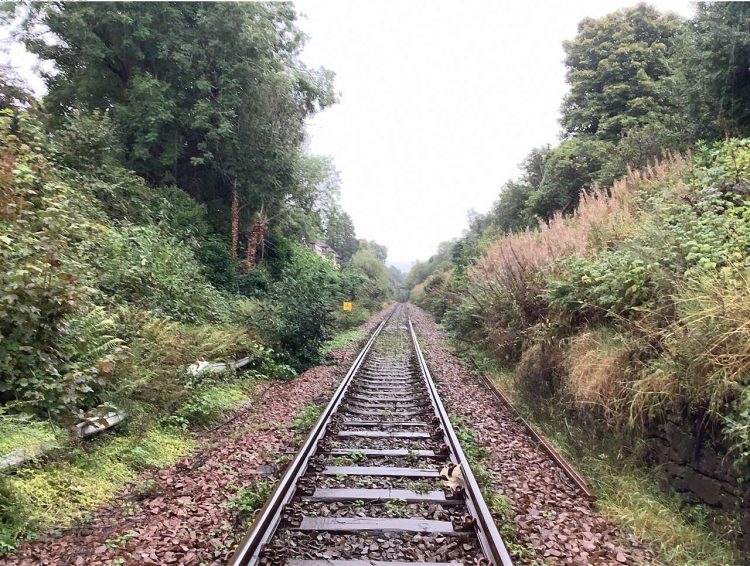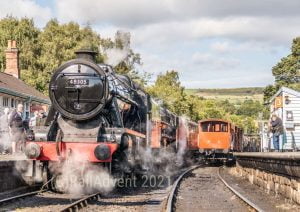Network Rail is carrying out a 12-month pilot project on the East Coast Main Line to automate the detection of potential hazards such as overhanging trees, leaves, and subsidence that have the potential to cause disruption.
Using ‘Front-Facing CCTV’ digital monitoring, the safety and maintenance of infrastructure and vegetation will be optimised using AI technology from CrossTech, which Hitachi Rail has installed on a London North Eastern Railway Azuma train.

In a collaboration between Network Rail, London North Eastern Railway, CrossTech, and Hitachi Rail, the natural environment and track including vegetation and embankments are monitored digitally in real-time.
Real-time monitoring enhances safety by helping to detect potential hazards like overhanging or invasive tree species, leaves on the track, or embankment subsidence that could cause harm or delays. Network Rail estimates that in its Southern Region vegetation-related incidents cost up to £3 million annually.

The 12-month trial started in May when a forward-facing CCTV camera (FFCCTV) was installed in the driver’s cab of an Azuma train.
The trial is to determine whether AI can play a key role in digitising the monitoring and maintenance of the infrastructure on the East Coast Main Line.
Using the latest in Artificial Intelligence (AI) camera sensor technology, the detection of potential hazards is automated and when combined with pinpointing where maintenance is necessary, it enables a proactive approach to infrastructure maintenance and will optimise when and where it is needed.

One of the major users of Artificial Intelligence in the rail industry is Northern, which is now using AI to answer customer queries and track passenger numbers.
At LNER, we are always looking at how we can further enhance our performance and innovate to provide our customers with an even better experience when travelling with us. We are delighted to be working with our industry partners on this digital trial, with technology fitted in the train cab that will provide real-time information and updates on infrastructure, helping to highlight any potential issues.
Linda Wain, Engineering Director at LNER





Responses
Network rail need to employ gardeners and tree pruners to keep bushes and trees under control. The height they allow nettles and cow parsley and bramble briars to grow along rail routes is bloody disgusting.
This approach points to a doctrine of reactive rather than planned maintenance.
The very approach that led to multiple accidents and the abolition of railtrack.
Government needs ti run public services for the public, not to provide commercial opportunities to useless private companies.
Absolutely right. At some point someone will have to go out there and remove the overgrown vegetation and the longer it is left while Network Rail faffs about with monitoring systems the more expensive it will be to accomplish.
It’s ok undertaking this work, but the requirement to fix issues needs to be pushed out to reactive teams quicker.
All of these issues are already logged but not much in the way of remedial work is carried out. “There is no budget for that” and yet millions is spent on technology that in all honesty doesn’t remove the problem, simply highlights a known known.
I look forward to becoming unemployed.
Er…. Or pay linesmen to do the same.
Why don’t they just cut the vegetation back instead of adopting technology for the sake of it to monitor something that anyone can see?
A few of years ago I spent the summer walking the LEC1 route from Rugby to Euston. The main part was plotting trees. Species, size, position, health. And then risk asessing them against the line speed, tree size and structures. A work bank was created to then remove or reduce trees where needed. This included leaf fall species. Yes, leaves on the line are a real problem. In total about 3 years of planning and work.
If the first part could be scanned by AI in a couple of hours, problems would be sorted sooner at a lower price.